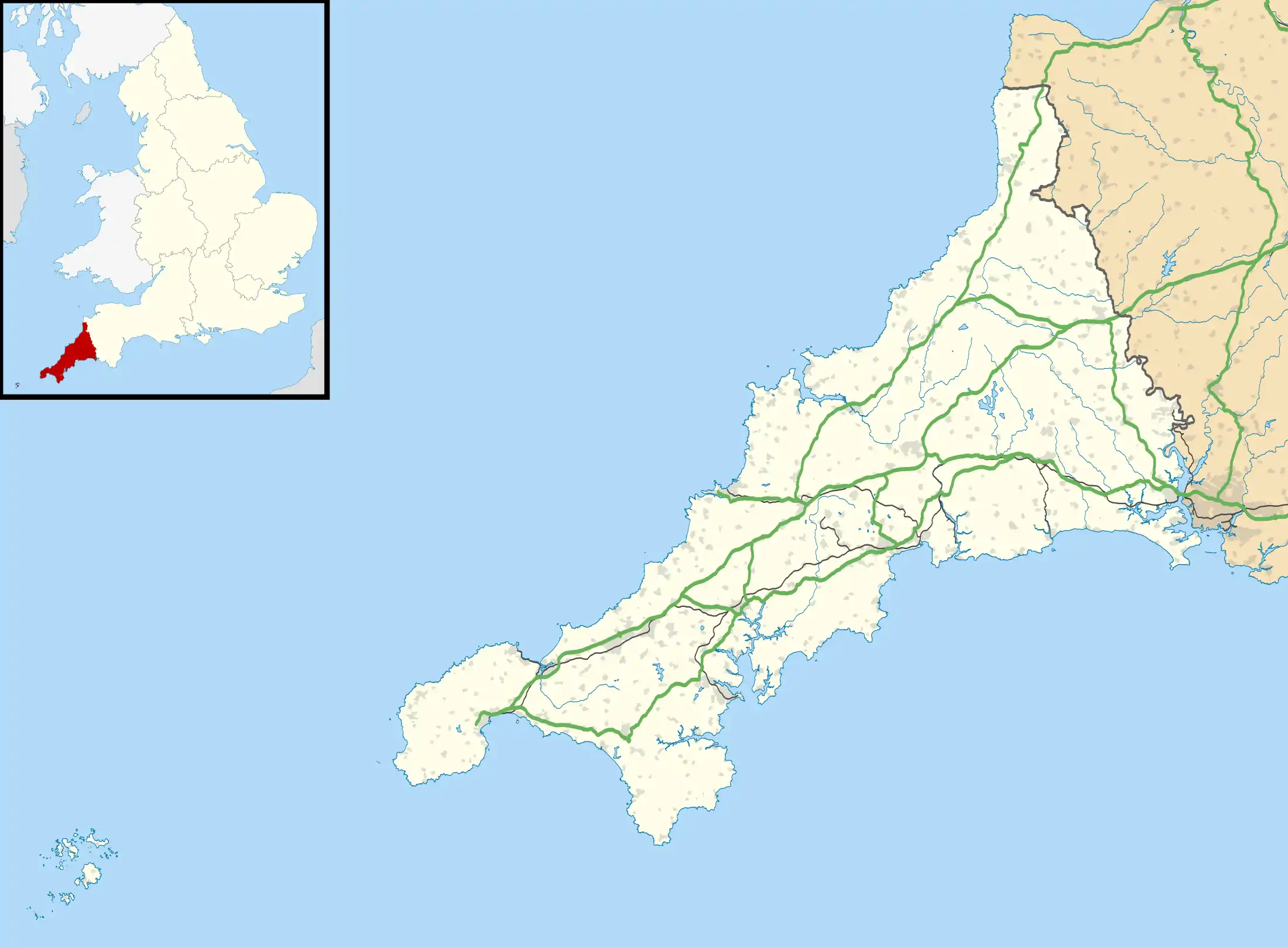Shire Hall, Bodmin
Shire Hall is a former judicial facility at Mount Folly Square in Bodmin, Cornwall. It was the main courthouse in Cornwall from 1838 to 1988. It is a Grade II* listed building.[1]
| Shire Hall, Bodmin | |
|---|---|
 Shire Hall, Bodmin | |
| Location | Bodmin, Cornwall |
| Coordinates | 50.4704°N 4.7189°W |
| Built | 1838 |
| Architect | Henry Burt |
| Architectural style(s) | Neoclassical style |
Listed Building – Grade II* | |
| Designated | 26 March 1949 |
| Reference no. | 1025049 |
 Location of Shire Hall, Bodmin in Cornwall | |
History
The county assizes had been held Launceston since 1201,[2] latterly in the old guildhall in the town centre which had been built in 1647.[3] However, with the completion of Bodmin Jail in 1779, St Lawrence's Hospital in Bodmin in 1818 and Bodmin railway station in 1834, Bodmin was well on the way to establishing itself as the county town of Cornwall.[4] In this context, the justices chose to confirm this arrangement by procuring a new shire hall, in which the assizes would be held, in Bodmin: the site selected had previously been occupied by the medieval Franciscan Friary of St Nicholas.[5]
The new shire hall was designed by Henry Burt of Launceston in a neoclassical style and completed in 1838.[1] The design involved a symmetrical main frontage with seven bays facing onto Mount Folly Square; the central section of three bays, which slightly projected forward, featured three round-headed archways on the ground floor and three sash windows on the first floor; a flagpole projected above the central window and there was a pediment above.[1] Internally, there were two principal courtrooms (the nisi prius court and the crown court).[1]
The shire hall was the venue for the trial and conviction of the servant, Matthew Weeks, for the murder of his former girlfriend, Charlotte Dymond, on Rough Tor in April 1844.[5][6] Dymond's story was subsequently immortalised in a poem by the Cornish writer, Charles Causley as well as by a granite obelisk which was paid for by public subscription and erected on the Tor in the mid-19th century.[7] It was also the venue for the trial and conviction of Dennis Whitty and Russell Pascoe, two of the last people to be executed in the UK, for the murder of a Cornish farmer, William Garfield Rowe, in August 1963.[5][8]
After the courts moved to a modern court complex in Edward Street in Truro,[9][10] the shire hall closed as a courthouse in September 1988.[5] It was refurbished with financial support from North Cornwall District Council, the Heritage Lottery Fund and English Heritage in the late 1990s and was re-opened by Queen Elizabeth II as a visitor attraction on 8 June 2000.[11][12][13] One of the courts was restored to its original condition and the other court was converted to serve as a Visitor Information Centre.[5]
References
- Historic England. "Shire Hall, Bodmin (1025049)". National Heritage List for England. Retrieved 5 November 2020.
- "Launceston County Gaol". Launceston Then. Retrieved 5 November 2020.
- "Launceston Town Centre". Launceston Then. Retrieved 10 December 2020.
- "The proud and fascinating history of Cornwall's 'county towns' Bodmin and Launceston". Cornwall Live. 4 July 2020. Retrieved 14 November 2020.
- "Take a step back in time at The Shire Hall". BBC. 28 October 2014. Retrieved 14 November 2020.
- "The Murder of Charlotte Dymond". Cornwall Guide. Retrieved 5 November 2020.
- Historic England. "Charlotte Dymond Memorial (1456077)". National Heritage List for England. Retrieved 5 November 2020.
- "The last supper of the final condemned man and his companion". This Is Bristol. 17 February 2012. Archived from the original on 30 December 2012. Retrieved 12 February 2013.
- "National Heritage List: Slough trading estate among new additions". BBC News. 10 May 2018. Retrieved 14 November 2020.
- Harwood, Elain (7 March 2018). "David Shalev obituary". The Guardian. Retrieved 14 November 2020.
- "The Queen during a visit to Bodmin's Shire Hall". Getty Images. 8 June 2000. Retrieved 5 November 2020.
- "Bodmin Conservation Area Character Appraisal and Management Plan" (PDF). Corwall Council. 1 December 2012. p. 24. Retrieved 5 November 2020.
- Neale, John (2011). Following the River Camel. Amberley Publishing. ISBN 978-1445600192.